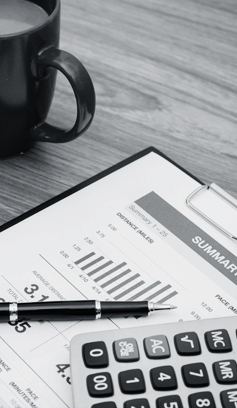
Key Points
- Australia’s stringent rules around licensing, advertising and manufacturing for therapeutic goods ensures high quality products, which are increasingly in demand in Asia.
- There are legal requirements that apply to all therapeutic goods, such as manufacturing requirements, product and labelling standards, along with evidence to support the therapeutic claims made about the products.
- Once the TGA approves products, sponsors have on-going legal responsibilities, with civil and criminal liabilities applying if the on-going requirements are not met.
- In addition to quality and efficacy, the falling Australian dollar is making Australian therapeutic products, and their manufacturers, very attractive, with the recent acquisition of Australian vitamin and supplement maker, Swisse Wellness, for A$1.67 billion by Hong Kong listed entity Biostime a prime example.
- The weakening Australian dollar, coupled with the perception that the Australian therapeutic goods industry is safe, are increasing the opportunities to export Australian therapeutic goods, especially complementary products, into Asia.
So what are therapeutic goods, and how are they regulated?
Therapeutics goods in Australia are regulated under the Therapeutic Goods Act1989 (Cth) (Act). These are goods that are represented to be, or that are used in connection with:
- preventing, diagnosing, curing or alleviating a disease, ailment, defect or injury in persons;
- influencing, inhibiting or modifying a physiological process in persons;
- testing the susceptibility of persons to a disease or ailment;
- influencing, controlling or preventing conception in persons;
- testing for pregnancy in persons; or
- the replacement or modification of parts of the anatomy in persons.
Therapeutic goods include prescription medicines, complementary medicines, over-the-counter medicines and medical devices. These are:
- Prescription medicinesare those products which require avalid prescription before these are dispensed, such as strong pain killers and antibiotics.
- Complementary medicineslike primrose oil and pawpaw ointment contain ingredients such as herbs, vitamins, minerals and nutritional supplements, and are usually purchased at retail outlets.
- Over-the-counter medicines such as paracetamol and some forms of hay fever treatment options, are sold directly to consumers without prescriptions and are usually purchased from a pharmacy, pharmacist or retail outlet. .
- Medical devicesare any instrument, appliance, material or other article intended to diagnose, prevent, monitor, treat or alleviate disease. Examples include medical gloves, bandages, contact lenses and wheelchairs.
Cosmetic products that do not make therapeutic claims are not regulated under the TGA. Ingredients in cosmetic products are regulated under the Industrial Chemicals (Notification and Assessment) Act 1989 which is administered by the National Industrial Chemicals Notification and Assessment Scheme.
The Therapeutic Goods Administration (TGA) is responsible for administering the Act and the Therapeutic Goods Regulations 1990. The TGA is part of the Australian Government’s Department of Health, and it ensures therapeutic goods supplied in Australia are safe, and fit for their intended purpose.
The TGA is responsible for overseeing the Australian Register of Therapeutic Goods (Register). Almost every product for which therapeutic claims are made must be entered in the Register before it can be legally manufactured, exported, imported or supplied in Australia. The therapeutic good must satisfy the TGA’s standards as to quality, safety and efficacy to be listed on the Register.
Importantly, the TGA adopts a risk-based approach, applying scientific and clinical expertise to ensure any benefit of a product outweighs any associated risk. This assessment is made for each product pre-market as well as post-market.
Trusted industry
The heavy regulation around therapeutic goods is advantageous for Australian companies, as demand for Australian therapeutic goods in Asia, specifically China, is starting to soar!
Hong Kong listed entity Biostime recently purchased 83 percent of Australian vitamin and supplement maker, Swisse Wellness, for A$1.67 billion. Biostime was one of many suitors for Swisse Wellness and had to outbid a number of large Chinese companies, including Fosun International and Shanghai Pharmaceuticals, who were eager to acquire Swisse.
Other companies including Bellamy’s Organic, Devondale, Blackmores and small Brisbane natural skincare brand Simplicite have reported high online sales demand from China. The same can be said for demand from other parts of Asia, as a growing middle class wishes to consume products which are authentic, and trusted.
The underlying message is clear – overseas customers, particularly from Asia, recognise the stringent rules and regulations for Australian therapeutics and perceive the Australian therapeutic goods industry as producing safe, high quality and reliable products.
So what does this mean for Australian therapeutic goods businesses?
There are significant business opportunities for growth into Asia for Australian companies who manufacture and produce therapeutic goods. However Australian manufacturers who are looking at opportunities in emerging marketsmust be familiar with local regulatory requirements, labelling and on-going regulatory oversight.
Given the strict Australian regulatory requirements, it may be that Australian productsare subject to less stringent recertification requirements in Asian countries,or approvals granted by the TGA are unilaterally recognised by that country’s regulator. This may subsequently reduce or eliminate the expenses normally associated with obtaining licenses and approvals.
If you would like more information on this topic please contact Nitij Pal.